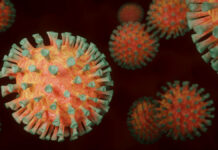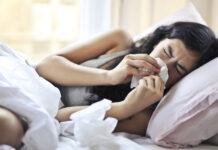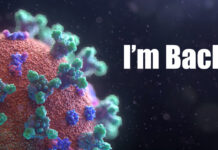If cases continue to grow at that rate, we’ll double our caseload every three days. That means we’ll have more than 88,000 cases by March 30 and one million around April 10, assuming that 1) the growth rate continues and 2) there are enough test kits and necessary infrastructure to actually test that many people. it should become clear by now that a self-imposed quarantine is one of the best ways to keep safe as the coronavirus explodes across America.
If you look at the map the New York Times updates several times per day, you can watch how quickly it spreads. In some states, it doubles overnight.
I honestly think that this growth in the number of infected will slow down somewhere between late March and early April thanks to the many closures and cancellations that have taken place in the past week. Those numbers, which are simply a mathematical progression rather than a true estimate, assume that nothing changes. They give us a glimpse of what things would be like if hundreds of thousands of people went to March Madness, hockey games, NBA games, the South by Southwest conference, business meetings, flew in from Europe, and took cruises, all of which is no longer possible. With most states canceling large gatherings, with businesses telling employees to work at home, and with at least 11 states and many urban school districts closing schools, the rate of infection should slow.
Because it might take you five or more days to show symptoms, plus a couple days to find a way to get tested and wait for results, I hope we’ll see cases peak in 7 or 14 days before slowly dropping off. This depends, however, on implementing successful social distancing and quarantines.
Which basically means: stay home, folks. To fight this requires more than avoiding a handshake and washing your hands. You have to avoid ALL CONTACT with the people that do not live with you. If the government won’t shut everything down, you need to take matters into your own hands and self quarantine.
A self-imposed quarantine means that you decide to stay home and eliminate all contact with other people because any one of them could carry the virus. A quarantine affects everyone in the home and is ineffective if one person goes to work every day and returns at night. It has to apply equally to everyone in the house at all times, with th exception of a serious medical or other emergency. That means no one is allowed to visit you. If you talk to your next door neighbor, you do it over the phone or over the fence from about 15 feet away. It means the kids can’t have sleep overs or play with friends. It means you can’t have family members or neighbors over and you need to prevent people from dropping in by locking your doors and possibly putting up a sign.
I’ll go so far as to allow deliveries of mail, packages and groceries, but try to minimize them. Don’t meet the driver or delivery person – let them drop things off and wave or give them a thumbs up from the window. If its sunny, let the package sit in the sun for a few hours because the UV light might kill the germs. You can also spray cardboard boxes with Lysol or wipe them down with cleansers before handling them. To be safe, wear gloves when you open the box or parcel. Remove the contents and put them into a clean, uncontaminated bag from your home. Discard or recycle the packaging materials without bringing them into your home. Bring the goods into your home and consider whether or not you can wipe anything off with a disinfectant wipe. I wouldn’t do this with fresh food, but if you bought a box of crackers or pasta, for example, it can’t hurt to wipe it off before adding it to your pantry or cupboard. When you are done, thoroughly wash your hands and face. Consider changing your shirt as well.
Regardless of whether you think catching the Coronavirus will kill you, make you moderately sick, or simply cause a few days of cold-like symptoms, you should try your best to avoid catching it. Why? For the good of your fellow man. Because if you get it, you could be the next patient zero that spreads the virus to 100 of your friends and neighbors.
One New York lawyer who got COVID-19 is the patient zero for 113 additional cases so far in the New Rochelle outbreak. The nursing home facility in Washington state has 57 cases, many of which lead to deaths. Do you want to be “that guy,” the one who gets written up in newspapers and medical journals as the next Typhoid Mary? Self-imposed quarantine can help keep you safe and healthy, but it can also keep you from unknowingly contaminating others and doing down in history as Covid Carl or Coronavirus Chris.
We Need More Closures
New York is quickly surpassing Washington as the state with the most COVID-19 patients in the U.S. Most of New York’s cases are concentrated in the city and it’s suburbs, which is where the bulk of the state’s population is concentrated. Let’s face it, dairy farmers around Courtland, New York, have far less interaction with people than anyone in New York City. The dairy farmer doesn’t take mass transit, doesn’t ride elevators, and probably eats out less than the average person from the city. It’s reasonable that the farmer is less likely to catch the virus, but its not impossible. And when farmers get sick, food will stop flowing fro the farm to the store and onto your table.
New York State and New York City need to stop the spread of the coronavirus. They need to shut down schools and get a step closer to a Chinese-style lockdown. They are putting millions of New Yorkers at risk by taking half measures, like asking people to take the train less often and work far away from others. This is New York! People are packed onto subway cars during rush hour and you know that cab driver isn’t sanitizing his vehicle between every rider.
Frankly, every municipality needs to think about how they are going to minimize or eliminate the viral spread among their populace.
Until people are required by law to stay shut in and away from others, your best bet at staying safe is voluntarily withdrawing and engaging in a self-implemented quarantine.







